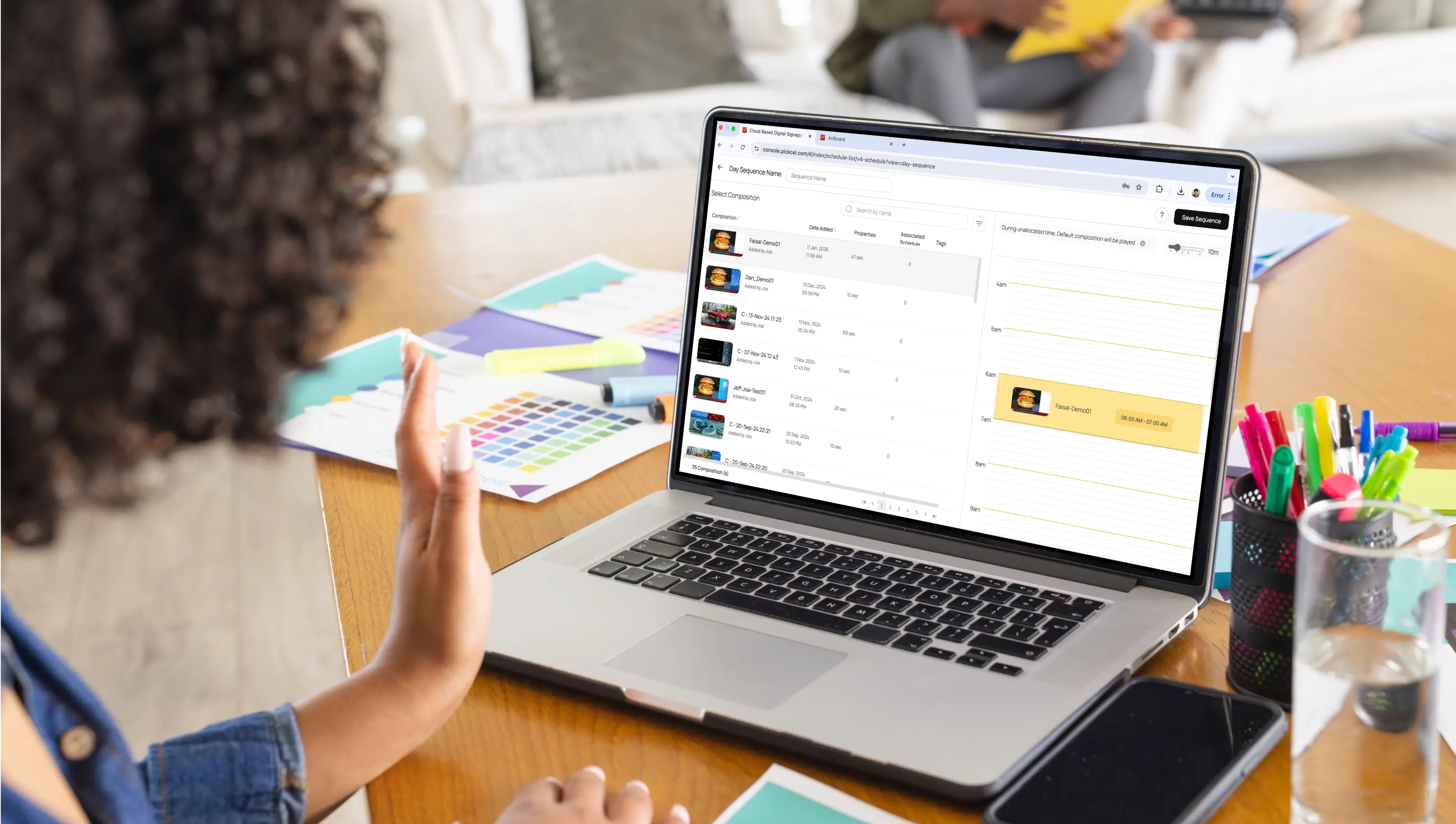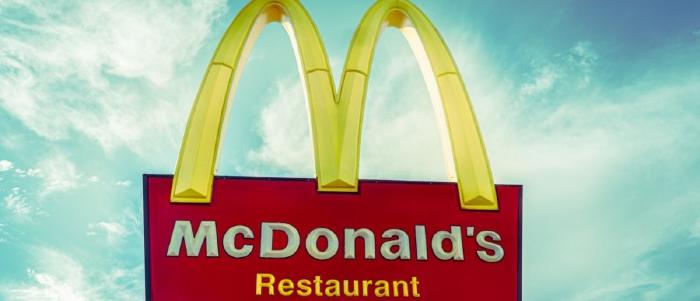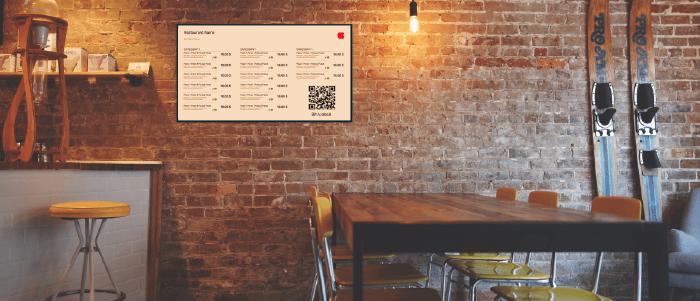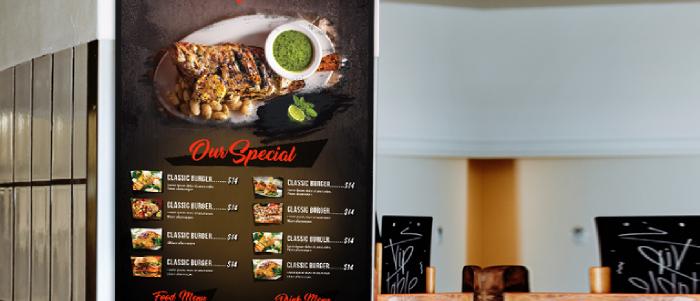
Dec 15 2021
6 min read

A digitally connected restaurant?
Is this some new futuristic tech-driven marketing gimmick that only the top one percent of businesses can afford? Because the better half of the pool of restaurant businesses are yet to catch up with the snazzy AR-VR blah blahs.
Well, no. That’s not what I am talking about.
The concept of a digitally connected restaurant is pretty simple: a restaurant that makes optimal usage of digital screens.
“Wow, I love the ambiance of this place!” We all must have said this, or perhaps heard someone say this at some point, right?
Well, that’s because we don’t always visit cafes and diners only to enjoy a fantastic nosh. We go there to have a fantastic time.
For many, even for the regulars, restaurant visits serve as an escape from the day-to-day monotony. And that is precisely why food service businesses need to provide their patrons with a break from the ordinary.
While there are plenty of ways to delight the restaurant crowd, nothing can compare to providing comfort and ease. Going digital means faster and better service and streamlined workflow, amounting to a dramatic increase in sales & improved customer experience.
For a long time, businesses have used digital screens only as electronic placards (mostly outdoors) for playing promotional content. But over the last decade or so, software integrations between different systems have granted more functional value to digital signage.
For the restaurant industry too, digital signage has quickly assumed a far more central role. Nowadays, if you go to a cafe or diner, chances are high that a screen will be staring at you from some corner. But, the issue is that many businesses are yet to mine the benefits of digital signage in restaurants up to its full potential.
That brings us to the idea of a digitally connected restaurant. To understand the concept, let’s go over the components one by one.

What is the usual scenario when you visit any restaurant or cafe?
You walk into the place– go straight to the ordering counter to see the menu board (good luck if it’s a popular place; you will probably have to stand on your toes to get a glimpse of the menu!)– and then, on your turn, there’s that rush to order quickly as a long line of hungry people waits after you.
Now, here’s the same scenario in a digitally connected restaurant:
You walk into the restaurant– a digital menu board is right at the entrance– it shows a QR code menu on screen– you scan the QR code with your mobile phone or tablet– and now you can browse the restaurant menu on your personal device: not on any fancy app, simply on the web. You walk to a table and browse your menu from the comfort of your seat. You can now take as much time as you need and place an order at your own pace.
Simple, yet, convenient, isn’t it?
The fact is, such restaurant digital menu board solutions are slowly on the rise, simply because it doesn’t take much extravagance to switch from print menus or chalkboards to digital menus. Even a humble household TV can function as a bar or restaurant’s digital menu board.
The flexibility and efficiency offered by digital menu boards are particularly impactful in the QSR environment, where menus often change for breakfast, lunch, and dinner, and where highlighting limited-time offers is crucial.
Digital menu boards are also visually alluring. They can play dynamic content, and most importantly, tweaking & updating the menu can be done in a heartbeat!
Many modern digital menu board software also allow scheduling & day-parting of menus. It takes off a massive load on the restaurant staff’s shoulders.
Also read: A guide for creating a digital menu board for your restaurants
Let’s take the earlier idea one step forward. What if you scanned the digital menu and could order your food right there, from your mobile?
Say what? No more queuing up?
Yes, indeed, that is very much feasible.
Furthermore, these web menus could also route you to the restaurant’s online payment system so that the entire process gets streamlined.
“To manage all those orders and payments efficiently, restaurants are using updated POS systems. Restaurants point of sale systems make all these processes even smoother.”
Besides providing comfort and ease, such online, from-the-table ordering & payment practices in restaurants can save the day in dire circumstances like the current Covid-19 pandemic.

Taking over from the previous point, once a customer places an order, the queue management system comes into play.
Nowadays, queue management systems are commonplace everywhere you go. Whether it’s restaurants, banks, hospitals, or amusement parks, you know where to look should you need to check your queue status: digital screens.
Queue management helps to simplify operations for the restaurant staff. Besides showing live order updates on screens, customers can also be notified on their phones when their order is ready. It adds to the customers’ perception of your restaurant as a place of relaxation and respite.
You may be inclined to think that implementing these solutions may have a negligible impact on customer experience (cx). But, in fact, the results are quite the opposite. These humble digital upgrades reap far greater benefits than the high-tech AR-VR gimmicks for which some big brands are currently paying an arm and a leg!
The reason is simple: entertainment comes after comfort & convenience.
Check out: Pickcel's digital signage for restaurants & QSRs for all your signage needs.
Entertainment comes after comfort & convenience, but it comes after all.
What is a restaurant without some entertainment! Whether it’s live music or karaoke, or just a TV tuned into an exciting soccer match, entertainment sets the mood of any hangout place. And that is one of the reasons why some restaurants & bars have many devoted patrons among their customers.
But when most restaurant businesses are tearing their hair out, thinking of more and more ways to keep their diners delighted, a simple trick can take customer engagement to the next level.
Here again, digital screens will steal the limelight.
Bars & restaurants can turn their digital signage into leaderboards of popular multiplayer games that restaurant-goers can play with or against each other, while they wait for their orders to arrive.
Fun games like Bingo, UNO, Scrabble, Chess, and Monopoly are equally popular among the younger and the older crowds.
This is not just a genius way for the restaurant businesses to entertain their customers, but also a chance to add an element of distinction. A simple gesture of giving free drinks or exclusive offers to the winners can be another clever way to market new products and build your brand.
The point is, gamification of digital signage is still a novelty for restaurants. So, implement it before it becomes as regular as a coffee machine in the coming days.
Check out: Top digital menu board comapnies each offering unique features to enhance customer engagement and streamline operations.
The whole idea of a digitally connected restaurant uses simplistic solutions to reduce friction in business. If you notice, all the restaurant digital signage solutions that I have mentioned above are quite commonplace. But the problem is that most of these solutions are deployed as standalone.
Some restaurants have digital menu boards, but not a queue management system. Some cafes have digital screens and TVs installed at every corner of the place, but they are grossly under-utilizing their resources by playing only commercials or showing the news & weather updates on TV.
The thing that most restaurants & bars fail to implement is a holistic solution— a common platform or a restaurant digital signage software using which they can manage all the different digital arrangements like queue management, entertainment, menu board.





Dec 15 2021
6 min read

Dec 8 2021
8 min read

May 31 2021
5 min read

Dec 28 2020
5 min read
Take complete control of what you show on your digital signage & how you show it.
Start Free Trial Schedule My Demo